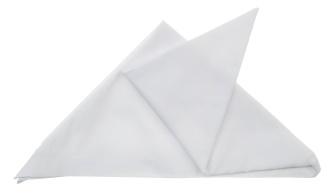Colonel Nell Espie
Matron Espie catches up on paperwork at her desk at the 1st Australian Field Hospital in Vietnam in 1969. In 1978 she was awarded the Royal Red Cross in recognition of her service to army nursing. (David Reginald Combe)
Nell Espie was still in school at Hobart High when the Second World War began. Inspired by the nurses who left hospitals to join up, she began her nursing training as soon as she left school in the hope that she too could join the army one day. Her opportunity came in 1951 when, in response to an advertisement calling for nurses to be part of the British Commonwealth Occupation Force (BCOF), Nell signed up for five years. After some training in military hospitals in Australia, she was on her way to the British Commonwealth General Hospital in Kure, Japan. As well as caring for sick Australian troops, the nurses also looked after soldiers’ wives and children who had accompanied them on overseas service.
From 1952, Nell was one of around 30 Royal Australian Army Nursing Corps (RAANC) nurses based in Japan who also served in South Korea. They were sent in small groups for a few months at a time and worked in harsh conditions at the British Commonwealth Zone Medical Unit in Seoul, set up in an old school building. Nell recalled that “there was no running water, and no sheets for the patients’ beds”. The nurses had to be accompanied by soldiers whenever they left the hospital compound, but Nell remembered feeling safe “as long as I could see a digger’s hat”.
Nursing Sister Lieutenant Nell Espie dresses a patient’s leg at the British Commonwealth Zone Medical Unit, Seoul, 1953. (Phillip Oliver Hobson)
Almost every night North Korean aircraft came on bombing raids over South Korea. The nurses were prepared for evacuation at any time, and were issued with shirts and trousers to pull on over their pyjamas if the siren sounded during the night. Nell remembered: “One night there was no light of course and I stepped straight into my slacks, but got them on back to front.”
Nurses provided emergency treatment for wounded soldiers prior to evacuation by RAAF medical crews to Japan, or on to Australia. Severe burns cases were frequent in the winter, caused by exploding makeshift heaters that the men had built in the freezing trenches.
Overseas service sometimes allowed time for sightseeing and souvenir hunting. Army nurses Captain Perditta McCarthy (left) and Lieutenant Nell Espie explore the markets in Seoul during their posting to Korea, 1953. (Phillip Oliver Hobson)
From Korea, Nell returned to BCOF in Japan, and then on to British military hospitals in Malaya for two years. Ten years later she was sent to the 1st Australian Field Hospital (1AFH) in Vung Tau, South Vietnam, as the matron. As in earlier wars, Nell and the nurses had to quickly get used to working in a new environment with limited preparation. The nurses’ quarters at the field hospital were nicknamed “Fort Petticoat”. They were long wooden buildings with metal roofs, cement floors, and louvre windows. To keep cool, each nurse was given a small electric fan for her room. Outside there was thick sand everywhere, which often blew in and settled on the beds. The buildings were surrounded by a wall of sandbags to absorb the impact of an artillery or bombing attack.
In Vietnam, nurses were usually rostered to work 12-hour shifts, six days a week, but when the need arose they just kept working. An outbreak of malaria in 1968 doubled the number of patients in the hospital, but there was no increase in staff. Sometimes the operating theatre would work around the clock for days at a time. Helicopters brought patients in quickly from the field. This allowed wounds to be treated before they worsened, helping more soldiers to survive than in earlier wars, but the nurses had to deal with more and more patients.
Nell’s initial five-year enlistment stretched into almost 30 years of service. She retired from the Army as Matron in Chief of the RAANC. After her return from Vietnam in 1969, and having seen service in three conflicts, Colonel Espie summed up her contribution to military nursing: “I joined the Army to nurse sick and wounded soldiers. I can think of no better way to serve my country.”
Activities
- In the photograph at the top of this page, Nell Espie is wearing a white veil like the one below.
- Why do you think these were phased out in the 1970s?
- Find a picture of a modern-day uniform worn by members of the Royal Australian Army Nursing Corps, and compare and contrast it with the uniform worn by Nell.

White cloth veils were worn by Australian nurses from the Boer War to the 1970s.

“BCOF JAPAN 1946” was overprinted on Australian stamps used by BCOF personnel and postal services.
- Australian postage stamps like the one above were used by BCOF personnel.
- Why do you think they were overprinted with “BCOF Japan 1946”?
- Investigate the British Commonwealth Occupation Force (BCOF). What was the purpose of BCOF? How many Australians were involved, and what kind of jobs were they doing? The following link to the Australian War Memorial website may help with your research .
- For 30 years after the Second World War, Australians served in campaigns against the spread of communism in Korea, Malaya, Indonesia, and Vietnam. Nell served as a nurse throughout these 30 years. What could have motivated her to serve for as long as she did?
Related objects
Bibliography
Jan Bassett, Guns and brooches: Australian Army Nursing from the Boer War to the Gulf War, Oxford University Press, 1992.


